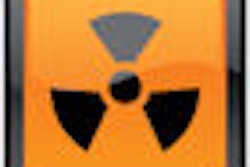Dear CT Insider,
Efforts to reduce CT radiation dose got down to brass tacks this week with the U.S. Food and Drug Administration's announcement that it would hold a public meeting in late March to discuss ideas for reducing dose from the equipment end. Earlier this month, the agency laid out plans to take a serious look at reducing unnecessary exposure from medical imaging.
Then today, healthcare industry trade group Medical Imaging and Technology Alliance (MITA) of Arlington, VA, held a press conference to announce a new warning system for CT scanners that would flash a yellow or red pop-up screen before activating a scan that might exceed recommended dose levels.
Dose levels triggering the alarms would be set by the healthcare facilities themselves -- in a kind of compromise aimed at getting the systems implemented as quickly as possible, MITA executive director Dave Fisher told AuntMinnie.com.
These moves come on the heels of a new international study showing wide variations in pediatric CT dose levels for the same types of exams. According to the article by AuntMinnie.com associate editor Cynthia E. Keen, radiologists in some developing countries were using adult scanning protocols for children. See what a difference a border -- or even the distance to the healthcare facility across the street -- makes by clicking here.
Fortunately for all concerned, the extraordinary Image Gently campaign to minimize pediatric dose celebrated its two-year anniversary last month.
Meanwhile, researchers from Berlin and Toronto used single-rotation 320-detector-row CT to image children with very low dose settings. Not only did they achieve diagnostic image quality at as low as 0.2 mSv, but the fast protocol stopped motion in the distressed young patients, eliminating the need for sedation. Learn how they did it and see the low-dose images in this issue's Insider Exclusive story.
In other news, doctors are getting a fresh look at urolithiasis, thanks to the large-scale virtual colonoscopy screening program at the University of Wisconsin. Based on extracolonic findings in more than 5,000 screening subjects, the results are challenging existing views about the prevalence and sequelae of stone disease. See what the researchers found by clicking here.
In the lungs, two new studies probe the imaging puzzle of ground-glass nodules, offering important new information on how to measure them and predict which ones will disappear over time. And a new computer-aided detection study, according to senior editor Erik L. Ridley, confirms the utility of automated assistance for the difficult task of nodule detection.
Finally, perfusion imaging is helping radiologists evaluate which pancreatic tumors might be malignant. Just scroll down to find these and many more stories, including a passel of new research on cardiac CT, here in your CT Digital Community.




















